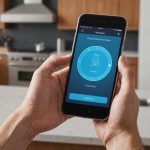Mastering Temperature Control: Expert Tips for Efficiently Monitoring Your System
Understanding the Importance of Temperature Control
Temperature control is a critical aspect of various industries, including healthcare, pharmaceuticals, and even your home. Maintaining the right temperature can be the difference between the success or failure of a product, the comfort of your living space, or even the safety of patients. Here, we will delve into the world of temperature control, exploring why it is so vital and how you can master it.
Temperature Control in the Pharmaceutical Industry
In the pharmaceutical industry, precise temperature control is essential for the integrity and efficacy of products. For instance, vaccines and medications must be stored and transported within specific temperature ranges to ensure their potency and safety. Companies like LogTag provide specialized temperature data loggers designed for medical applications, which are crucial for compliance with strict regulatory guidelines such as the EU’s Good Distribution Practices (GDP) and the FDA’s Title 21 of the Code of Federal Regulations (CFR)[1].
Topic to read : Crafting the perfect harmony: achieving a balanced setup for gaming and productivity
“Ensuring the correct temperature range is maintained during storage and transport is critical for the pharmaceutical industry. This not only ensures the quality of the products but also protects patient health and avoids non-compliance penalties,” notes a LogTag expert.
Setting Up Your Temperature Control System
Setting up an effective temperature control system involves several key steps, from choosing the right equipment to implementing best practices.
In parallel : Mastering Multi-Bay Thunderbolt 3 RAIDs: Your Comprehensive Guide to Effortless Performance and Efficiency,slugslug
Choosing the Right Equipment
When it comes to selecting temperature control equipment, precision and reliability are paramount. Here are some factors to consider:
- Precision and Accuracy: Look for equipment that offers high precision and accuracy, such as the temperature sensors from Anderson-Negele, which are designed for hygienic applications and offer short response times[3].
- Ease of Use: Opt for user-friendly devices with intuitive software, like the LogTag data loggers, which are designed for various medical environments and are approved by global organizations such as UNICEF and the World Health Organization[1].
- Compliance: Ensure the equipment complies with relevant regulatory standards. For example, in the pharmaceutical industry, compliance with GDP and BPF (Good Manufacturing Practices) is essential[1].
Implementing Best Practices
Here are some best practices to ensure your temperature control system operates efficiently:
- Regular Maintenance: Regular maintenance is crucial for the optimal performance of your temperature control system. This includes checking and calibrating sensors, updating software, and performing routine checks on the entire system.
- Air Filters and Heat Sources: In home settings, keep heat sources away from your thermostat and clean or replace air filters regularly to maintain airflow and efficiency[4].
- Direct Sunlight: Use curtains or blinds to block direct sunlight, which can affect your thermostat’s readings and efficiency[4].
Temperature Mapping: A Comprehensive Approach
Temperature mapping is a process that involves measuring and recording temperatures at various points within a controlled environment to ensure uniformity and compliance.
The Mapping Process
Here’s a step-by-step guide to the temperature mapping process:
- Identify Critical Areas: Determine the areas within your controlled environment that are most critical for temperature control. This could include storage rooms, transportation vehicles, or specific zones within a facility.
- Select Mapping Points: Choose multiple points within these areas to place temperature sensors. Ensure these points cover the entire space and include any potential hot or cold spots.
- Conduct the Mapping: Use data loggers or other temperature monitoring devices to record temperatures over a specified period. This period should be long enough to capture any fluctuations that might occur.
- Analyze the Data: Review the data collected to identify any temperature variations or anomalies. This helps in adjusting the system to maintain a consistent temperature range.
Energy Efficiency and Cost Savings
Temperature control systems can significantly impact energy efficiency and cost savings, especially in home and industrial settings.
Home Thermostats
For home thermostats, here are some tips to maximize energy efficiency:
- Set Moderate Temperatures: Setting your thermostat to around 68°F to 70°F during winter can save up to 1% of your heating costs for every degree lowered[2].
- Program Your Thermostat: Program your thermostat to lower the temperature when you are asleep or away from home. Lowering the temperature by 5-10 degrees for 8 hours or longer can result in savings of up to 10% on your annual heating bill[2].
- Smart Thermostats: Consider upgrading to smart thermostats, which can automatically adjust temperatures based on outside weather, provide energy usage reports, and allow adjustments via your mobile device[2].
Industrial Settings
In industrial settings, especially in the pharmaceutical industry, energy efficiency is crucial for maintaining controlled environments without excessive energy consumption.
- PID Controllers: Use PID (Proportional-Integral-Derivative) controllers to maintain precise temperature control. These controllers can adjust heating or cooling outputs based on feedback from temperature sensors, ensuring optimal performance and energy efficiency.
- Cold Storage: For cold storage facilities, ensure that the temperature range is consistently maintained. This can be achieved through regular temperature monitoring and adjustments using data loggers and other monitoring devices[1].
Ensuring Regulatory Compliance
Regulatory compliance is a critical aspect of temperature control, particularly in industries like pharmaceuticals and healthcare.
Key Regulations
Here are some key regulations to be aware of:
| Regulation | Description |
|---|---|
| EU GDP | Good Distribution Practices for pharmaceuticals, emphasizing temperature control during storage and transport[1]. |
| FDA Title 21 CFR | Code of Federal Regulations by the FDA, including sections on temperature control for pharmaceuticals and blood products[1]. |
| IATA Regulations | International Air Transport Association regulations for the transport of pharmaceutical products, focusing on strict temperature management[1]. |
| USP Chapter | United States Pharmacopeia guidelines for the storage and shipping of pharmaceutical products, highlighting the importance of temperature control[1]. |
Compliance in Practice
To ensure compliance, integrate temperature monitoring devices into your system and follow these steps:
- Continuous Monitoring: Use devices like LogTag data loggers to continuously monitor and record temperatures.
- Data Analysis: Regularly analyze the data to ensure that the temperature range remains within the specified limits.
- Documentation: Maintain detailed records of temperature readings and any actions taken to correct deviations.
Practical Insights and Actionable Advice
Here are some practical insights and actionable advice to help you master temperature control:
Tips for Homeowners
- Program Your Thermostat: Program your thermostat to adjust temperatures based on your daily routine. For example, lower the temperature when you are asleep or away from home[4].
- Use Zoning Systems: Consider using zoning systems to set different temperatures in different areas of your home, reducing energy consumption while maintaining comfort[4].
Tips for Industrial Settings
- Conduct Regular Maintenance: Regularly check and maintain your temperature control systems to ensure they are operating at peak efficiency.
- Use Advanced Sensors: Utilize advanced temperature sensors like those from Anderson-Negele, which offer high precision and short response times[3].
Mastering temperature control is essential for maintaining the integrity of temperature-sensitive products, ensuring compliance with regulatory standards, and achieving energy efficiency. By choosing the right equipment, implementing best practices, conducting thorough temperature mapping, and ensuring regulatory compliance, you can ensure your system operates optimally.
In the words of a LogTag expert, “Temperature control is not just about maintaining a specific range; it’s about ensuring the quality and safety of products, protecting patient health, and reducing energy consumption. With the right tools and practices, you can achieve all this and more.”
By following these expert tips and integrating them into your daily operations, you can master temperature control and reap the benefits of a well-monitored and efficient system. Whether it’s in your home or in a pharmaceutical facility, precise temperature control is the key to optimal performance and compliance.











